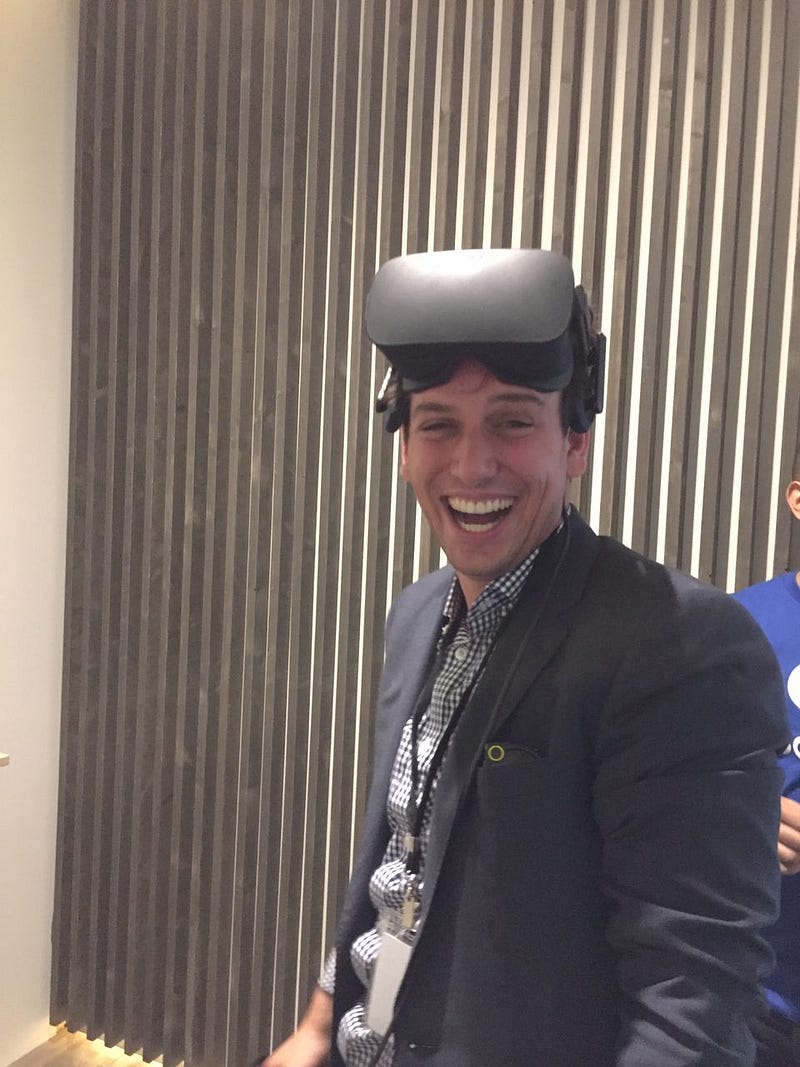Last week I started writing up some views on what I’ve seen so far, and my thoughts on technology moving forward. As we know CES wasn’t as good as years past as it’s starting to blur all it’s colors to be that mushy amorphous brown that no one likes trying to appease everyone but really it just grosses everyone out. No one likes you amorphous brown! As such, I’ve added in my own color and some, hopefully, original thoughts to make this a more enjoyable experience for you.
Virtual Reality:
People have been excited about VR since the early go arounds like 25 years ago, and that wave ended up leaving us with a bunch of antiquated porn devices because we couldn’t get main stream adoption. Now that we’ve closed a lot of the physical technology barriers (latency, eye tracking, etc), we are at the cusp of actually unleashing this tech on the world, but it’s yet to be determined if it will be sticky enough this go around either.
VR in it’s current form is gaining more and more popularity starting with Head Mounted Displays (HMD)’s. We know the capstone HMD’s, Vive and Oculus, have had at best a lackluster sales to date but the pricing would naturally suggest this as it’s $800 for a headset and $3,000 for the computer to run the thing. There just aren’t enough prosumers out there that need this THAT badly.
Since sales of these guys are still under 800,000 total units combined last I checked it makes a real case for enterprises to start buying them. Use cases could range from VR arcades, to education for hands on coursework like med school or even trade schools. For these applications to be viable there are two things that would have to happen, the first is the proliferation of the devices and the second is that there would have to be more content built on top of them.
If the enterprises are buying them and commissioning work, that eliminates the first barrier, and the second has been filled in by copious amounts of games, application studios, and content creators that have spun up over the last two years. I’m very bullish on enterprises involvement in VR considering that right now there are very few really good examples in the market today to my knowledge- please let me know if there are any as I’m all ears. Additionally, I would challenge you to think about what major technological breakthrough in the last three decades started out directly with in the consumer world without starting in enterprise. Both Oculus and Vive attempted to go the other way and Samsung Gear has done the same enabling mobile VR. Again, I ask that if you have any thoughts around this please share them as I would love to hear them.
I think a killer enterprise use case here is corporate training considering we spend over over $70 billion on it every year in the US alone. Walking our way back to 2015 to look at some stats, the “U.S. training expenditures… took an upward trajectory, soaring 14.2 percent to $70.6 billion. Spending on outside products and services skyrocketed 29 percent from $6.1 billion to $8 billion, while other training expenditures (i.e., travel, facilities, equipment) more than doubled to $28.7 billion.” Imagine establishing a solution that could more effectively demonstrate services and real world scenarios, and you wouldn’t have to shell out nearly as much for travel. In this world cap-ex would drop and you could even create micro and/or mobile training centers where the office is located- see example of flight attendants.
If the two big HMD players can make it out to the other side great as hardware prices come down and computing power ramps up more power to them. In my opinion, maybe it’s time for a new platform that’s truly enterprise grade to come in and dominate that market. I think that in relation to the quality and cost of Vive and Oculus they are not robust enough for enterprise. Think about this for a second, what kind of system would make a Boeing or their peers be comfortable enough to supplement or replace a multi-million dollar simulator? My feelings are that a $4,000 VR system with a lot of room for improvement just doesn’t make the cut.
Oculus’ billion dollar acquisition 2 years ago set the tone for this current iteration of the VR market. More startups go into the space chasing the potential acquisition creating more supply and consumers feel compelled to pay attention, if not only temporarily, to see what all the fuss is about. If the product can meet, or god forbid even exceed, the demand then the nascent market can take off. Unfortunately, Oculus and Vive have taken too long to get their HMD’s into a mass market form and OEM’s that have started to smell blood are tackling this problem for themselves: Qualcomm, Intel, Lenovo are all making HMD’s which makes startups like Fove almost redundant overnight.
Another belief I have is that VR is inherently designed to be isolating, and I feel strongly that embedding a social element into VR is going to be increasingly more important. Arcades are a good use case here as they are ripe for disruption considering the space has been in disrepair for the last few years now. I’m in defense of VR arcades because I know that, for myself, I don’t need to own a $4,000 system but I’d definitely pay a few bucks to play Sonic or Crash Bandicoot (two of my childhood favorites) in VR. Here at Davos I got to hangout at the Facebook Popup and tried Climb (picture , and I have to say I was very impressed and would happily pay to play that for a few minutes.
read the full post on Medium here.